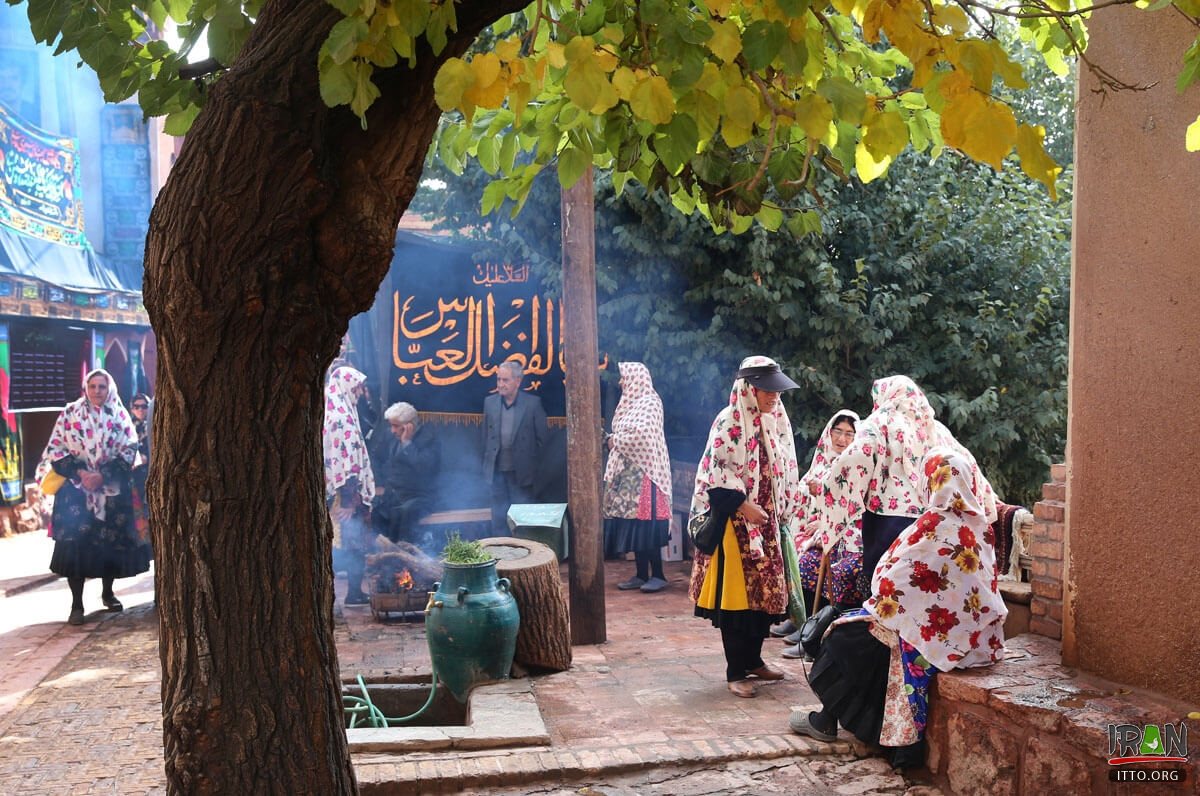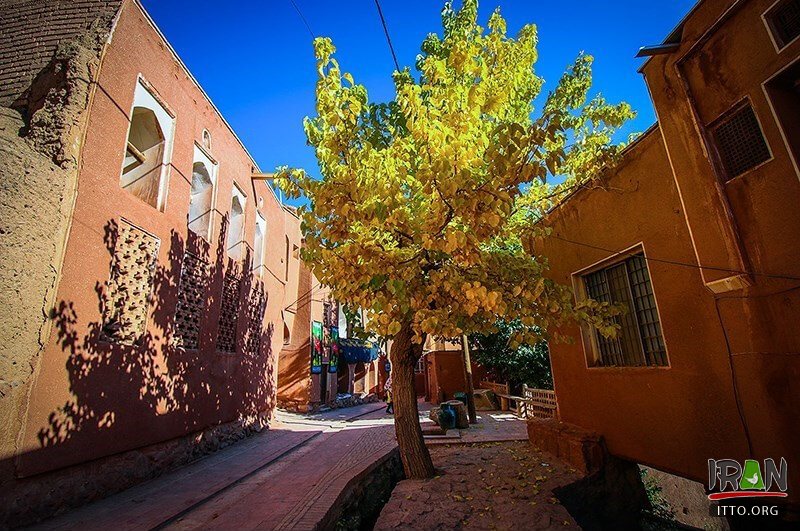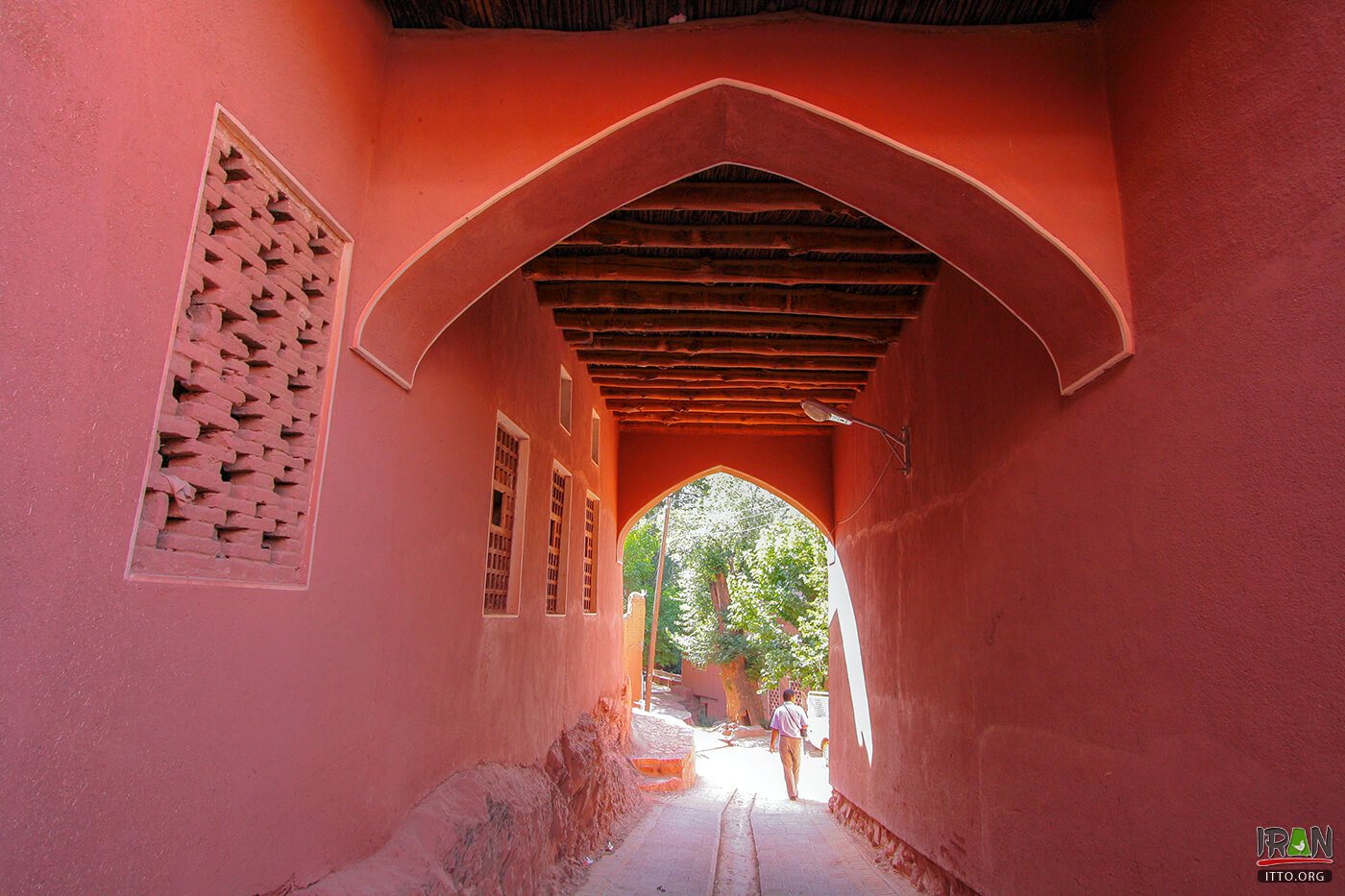The Historical Village of Abyaneh (Abianeh Village) is one of the well known in the Central District of Natanz County in Esfahan province, in addition to which it boasts of a pleasant climate. This Village is located in the northwestern slopes of the Karkas Mountains and at a distance of 28km. from the city of Natanz and 70 kilometers southeast of Kashan.
The architectural facet in Abyaneh Village along with the rituals and apparel of its inhabitants is a sight to witness. The Jame' mosque of this vicinity with its historical wooden altar dating to 776 AH, and its wooden pulpit dating to 466 AH. and an inscription in the 'kufi' script is greatly valued both as a historical and religious monument.

Abyaneh is a historic village in Iran, dating back to the Sasanid era (224AD to 651AD), when it is believed that Zooastrians fleeing from Arab invaders set up a string of villages in the area around the Karkas Mountains.
The dialect of the people of Abyaneh has preserved some characteristics of the Middle Persian language, the language of the Sassanian Persia. Since June 2005, the village has been undergoing archaeological excavations for the first time ever, as a result of an agreement between Abyaneh Research Center and the Archaeology Research Center of the Iranian Cultural Heritage and Tourism Organization.
Abyaneh’s most impressive building is the 11th-century Jameh Mosque, with its walnut-wood mihrab and ancient carvings. In addition to the mosque, there are some other places which are worth a visit including the Zoroastrian fire-temple dating back to the Sassanid period, three castles, a pilgrimage site and two other mosques.

This ancient village, which has largely preserved its culture, language, architecture, costume and traditional rituals over the years, is also famous because of the color of its soil. Due to an unusual high level of iron oxide, the soil in Abyaneh village has a reddish, beautiful color which makes it even more distinguished.
The oldest building in Abyaneh is Harpak Zoroastrian Fire Temple, was built during the Achaemenid period (550-330 BC). The fire temple used to be an important religious temple for its majority Zoroastrian inhabitants until Islam was fully accepted by the locals. But its golden period was during the Safavid dynasty.
History of Abyaneh:
The village has a long history which dates back to more than 2,000 years ago and been registered on Iran’s National Heritage List since 1975. The word Abyaneh, has been derived from the word “viona” meaning a willow grove. It’s been known an entrance to Iranian history as the locals are deeply committed to honoring their traditions. The language spoken by the literate people of Abyaneh is Parthian Pahlavi.

Although Abyaneh is a popular tourist destination among domestic and foreign visitors year-round, the village has actually a very few numbers of permanent residents and many of its people only spend the summer in this village.
The local clothing for example is in a style of great antiquity. The women’s traditional costume typically consists of a white long scarf (covering the shoulders and upper trunk) which has a colorful or floral pattern and an under-knee skirt or pleated pants.
Almost all of the women in the village wear this costume, just like their ancestors. And this tradition makes Abyaneh even more special. When you go visit Abyaneh, you would notice that most of the population are rather old. It’s because the young generations prefer to migrate to bigger cities to have a better opportunity to make a life.

